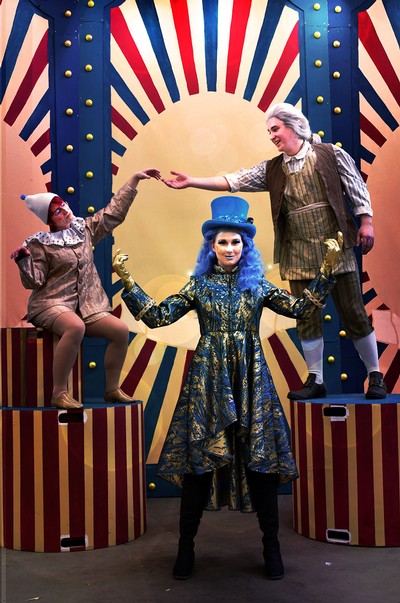Review: Pinocchio Teatrale
“Pinocchio Teatrale” is the latest production put on by the Department of Theatre Arts at Utah State University. The musical takes on the classic story of Pinocchio with a darker tone, creating a distinctly different atmosphere than other iterations of the tale do.
Written by Nicole B. Adkins, the story follows Pinocchio through his transformation into a real boy, all set to a score by Ashby Blakely. It’s geared towards younger audiences, but it doesn’t hold back on the depth of storytelling, making it an enjoyable experience for any viewer.
Adkins wanted Pinocchio to be a driving factor behind why things happened in her version of the classic tale. In other versions, Pinocchio was more of a passenger in his own story.
“Everything happened to Pinocchio, and Pinocchio was more of a victim and responsive to what was thrown at him. He was kind of thrown about with the winds of fate, and I thought in the original stories, he has so much more agency,” Adkins said. “The highs and lows are a result of his choices and behaviors, and I wanted to track that journey, and I was really interested in what that looked like.”
Stefan Espinosa, the show’s director, wanted to deepen the message beyond just the simple idea of listening to specific people and instead, focus more on choosing who we listen to in life.
“A lesser playwright would have made the message, ‘Listen to these specific adults, and you’ll be fine.’ But that’s not the message of the play; the play is more about being careful about who you choose to connect yourself to,” Espinosa said. “‘Pinocchio’ is more about a chosen family. Really, he chooses who his family is.”
Espinosa said the show focuses on relationships and strings of attachment.
“There’s this question of ‘Who holds the strings?’ in this play, and I think ultimately, the answer is you get to choose who holds the strings: who you hold strings for, who holds strings for you, how we connect ourselves to each other, who you tie yourself to, those bonds of love,” Espinosa said. “In that love, there is accountability, and if you want to have real, quality relationships, it’s not a one-way street. You have to give and take; you can’t just take and run.”
Espinosa said the show, which takes place in Tuscany, has a magical circus theme that lends itself to a darker atmosphere.
“In this version, it is a circus theme. It’s kind of this dark circus with magic in this world, and I really credit our design team with finding a way to bring that world to life. It is a deceptively simple set, but it has a lot of character, with a lot of space for the actors to do all sorts of circus tricks,” Espinosa said.
According to Espinosa, the “low-tech magic” of the show allows the actors to shine.
“What we do is rooted in old theatrical styles, like shadow play and puppetry and showing off the skills of the actors, which is supported by the design. I think it really highlights the magic humans can create in a space and transform it,” Espinosa said.
Atkins said the show is for younger audiences, but she wanted it to be able to stand as a piece of theater regardless of its intended audience.
“We assume that maybe children don’t know as much or have as many questions — that they’re not as present, as aware. And sometimes we sell them short,” Atkins said. “So for me, the most important thing is that this is a show that they feel connected to, that it is a show made for them.”
Espinosa said the play is made specifically to communicate with the audience in a way that feels genuine.
“We don’t talk down to our audience. We are not the adults who are allowing young people into this theater and giving them the watered-down version of real theater, some version that we think they could possibly understand,” Espinosa said. “It speaks to all audiences. There’s a perspective that Nikki and Ashby allow for young people to connect to it specifically, but it’s for everybody.”

